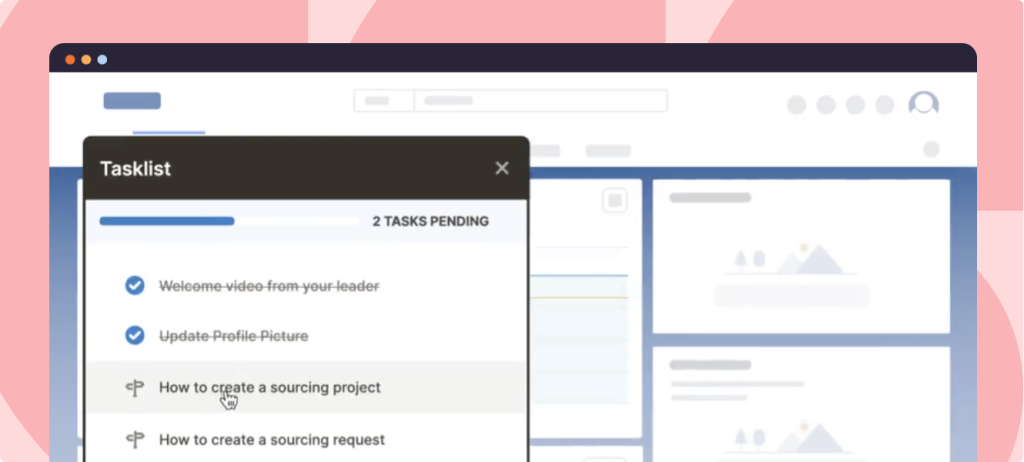A corporate learning and development strategy is critical to the growth of your employees and overall business, but it comes with a cost. According to a 2023 training industry report, companies spend, on average, $954 per learner. The same report found that average training expenditures for large companies came in at around $16.1 million.
Many HR teams find building an L&D budget for training and developing their workforce daunting. From tracking KPIs to following HR trends to forecasting business needs, it’s an active process that requires data and oversight.
How can HR and L&D teams calculate and produce an accurate prediction for their training costs? This guide on L&D budgets will help you create and allocate a training budget that works for your needs.
What is a Learning and Development Budget?
A learning and development budget encompasses learning and development programs’ financial planning, allocation, and costs.
Factors such as number of employees, employee development goals, revenue and expenditure projections, and organizational values can all influence learning and development budgets.
How to Calculate Your L&D Budget
There are a number of different techniques that organizations use to define their L&D budget.
1. Percentage of salary budget
Another common way to estimate the L&D budget for the year ahead is to use the average employee salary in your industry.
Training Budget = Industry Average Salary * No. of FTEs
(FTEs represent the hours worked by a single full-time employee)
2. Percentage of average employee salary
Another common way to estimate the L&D budget for the year ahead is to use the average employee salary in your industry.
Training Budget = Industry Average Salary * No. of FTEs
(FTEs represent the hours worked by a single full-time employee)
3. Breakdown of training needs and cost estimates
The third most common way to estimate your L&D budget is by developing a detailed cost breakdown based on the future initiatives planned and past experiences. This means considering different costs such as:
- Purchasing training materials to help you design and guide the session.
- Renting a venue to conduct the training session.
- Travel and accommodation expenses of the external vendor hired to conduct the training session.
- Meals and accommodation expenses for the participants.
- One-time purchase and setup fees if training is conducted online.
- SaaS subscription to employee training software and L&D tools.
Although this method of breaking down all your training expenses takes a long amount of time, it provides the most accurate estimation for your L&D budget.
What is the Average Learning and Development Budget?
The average L&D and training budget varies based on your organization’s goals, individual employee goals, performance indicators, revenue and expenditure projections for the fiscal year, etc. Typically, 2 to 2.5% of the company’s budget is considered standard for employee training.
4 Reasons to Increase Your L&D Budget
Here are the four most significant reasons for training managers to propose an increase in the organization’s L&D budget.
1. Overcome skills gaps
Continuous and effective training programs allow you to strengthen the skills that each employee needs to improve. It addresses employee weaknesses and skill gaps by providing necessary training and creates an overall knowledgeable workforce that works independently without constant help from others.
2. Attract top talent
When companies demonstrate a commitment to employee learning and career progression, employees feel valued and become the most potent brand advocates for the business. This means they’re more likely to recommend your organization to their network of friends, ex-colleagues, and family members. This gives you a vast pool of diverse talent to choose from while hiring.
3. Support a hybrid workforce
The introduction of remote and hybrid work culture post-pandemic demonstrated the crucial role L&D professionals play in helping an organization adapt to unexpected changes. Allotting L&D budgets to streamline remote training and enable employee engagement has become necessary for all organizations embracing the hybrid/remote work culture.
4. Employee retention
According to a survey by TalentLMS, 76% of employees say that they are more likely to stay with a company that offers continuous training, and 86% of HR managers find training beneficial for the retention of employees.
Providing continuous learning and development for employee advancement is a great employee retention strategy that makes your workforce feel that they are a critical part of your company’s success.
How to Build Your L&D Budget
Building your L&D budget is no small undertaking. Here are a few tips that will help you during the process.
1. Conduct a training needs assessment
Conducting a training needs assessment is an essential step in preparing your L&D budget, as it can improve the predictability of your employee development for the upcoming years. An assessment like this can help determine the opportunities for improvement in your organization by revealing any gaps in skills, helping train the right employees with suitable approaches, and setting the budget for employee development or succession planning. It is best to conduct a training needs assessment annually.
2. Build a solid strategy
Identify the macro and micro objectives within your learning and development strategy and create a document that identifies key deliverables, short and long-term objectives, and the ROI for L&D investment. The document should clearly articulate how a program will pay for itself repeatedly.

3. Use data insights
Data is an essential aspect of creating your L&D budget strategy. To create your annual L&D budget, gather insights from your internal data, such as – where the funds were used in the past and where you fell short of target due to financing obstacles. This will help you build a thoroughly planned L&D budget.
4. Set a budget from the total employees’ salary
Industry experts suggest anywhere from 1%-5% of your total salary budget can be allocated for training initiatives. Using this method helps avoid overspending relative to your total payroll.
5. Set a budget based on individual salaries
You can either set a budget from the total employees’ salaries (as explained above), or you can set a budget based on an employee’s individual salary. For instance, if someone makes $50,000 a year and you choose to invest 3% of their salary into learning and development, they’ll have $1500 set for training.
6. Set a budget for specific courses or certifications
Conducting a skill gap analysis will help you identify which training program, certification, or course is likely to meet your needs, allowing you to set the budget accordingly. This method is generally more precise than simply using percentages of your team’s salary and can be more easily tied to outcomes.
7. Practice visibility with stakeholders
During tough times, L&D budgets often need to be cut down as they make up a considerable amount of company spending.
During such scenarios, L&D leaders must take the initiative to regularly consult with their stakeholders to discuss business priorities and proactively diagnose critical issues that they could add value to.
To achieve more with less, focus on understanding employees and then address actual friction points with deeper discussions, workshops, and digital resources.
8. Optimize for results
Your L&D budget must be oriented toward measurable results. There are a few metrics that you can use to measure your success – cost-per-learning-hour, employee satisfaction scores, reduction in compliance issues, sales growth, etc.
Stay focused on the numbers that provide a way to measure your success. You can justify the financial resources, and stakeholders will feel confident in handing you the money in the future. A strong L&D budgeting strategy will keep you from overspending – and may reduce training costs.
L&D Budget Template
Download a free L&D budget template to create a quick budget for your organization. Building learning and development templates from scratch can be difficult, so download this template to get a jump start.
Your free L&D budget template, will include the following:
- Allocate your annual L&D budget to each quarter
- Establish short-term goals with estimated costs attached
- Establish long-term goals with estimated costs attached
- Track spending by quarter and initiative
- Analyze actual spend vs projected
Get a customizable copy of our free L&D budget template now!
Ideas to Allocate L&D Budget Surplus
Budget allocation is one of the most difficult tasks within any organization or discipline, and L&D is no different. Smart budget allocation will ensure your L&D dollars reach further and help you meet your organization’s learning and development goals.
Here are a few helpful ideas for allocating your L&D budget.
1. Workshops
Workshops are a great way for employees to learn new skills while staying up-to-date with the latest industry trends and technologies. They also provide a great opportunity for employees to interact with their team members or other colleagues.
2. Certification courses
Set aside some of your L&D budget for certification courses that help employees hone their skillset, finish projects ahead of schedule, and meet client objectives. Certification courses can include both self-paced learning courses and live instructor-led training conducted virtually.
3. Conferences
Conferences hold a great deal of value for employees, offering valuable knowledge and information along with the opportunity to make new, relevant connections in a short period of time.
4. In-house expert
Bringing in a professional with value to offer your employees – be it motivational or inspiring is another great use of your L&D budget. This will bring outside ideas and energies into your workplace to shake up your workforce’s creativity and inspiration.
5. Mentoring programs
Mentoring programs allow employees to get deeper, one-on-one attention from a professional in their field of work, learn new soft or hard skills, and receive a different point of view.
6. Employee well-being
While allotting the budget for different types of workplace training, it is also essential to set aside some budget for employee well-being. Organizations can offer tools to aid employee well-being and offer meditation programs that allow employees to engage with their mental health and encourage an overall happier workplace.
Learning Clicks Better With Whatfix
Whatfix enables L&D teams to create interactive, in-app learning content such as contextual walkthroughs, tooltips, knowledge bases, etc., to improve digital adoption for your employees.

To maximize your L&D budget, you must ensure learning is effective and efficient. One way to improve learning outcomes is to see where people drop off within your developmental content. Whatfix analytics can show you where these dropoffs are happening via user journeys.

To learn more about Whatfix, schedule a free demo with us today!














